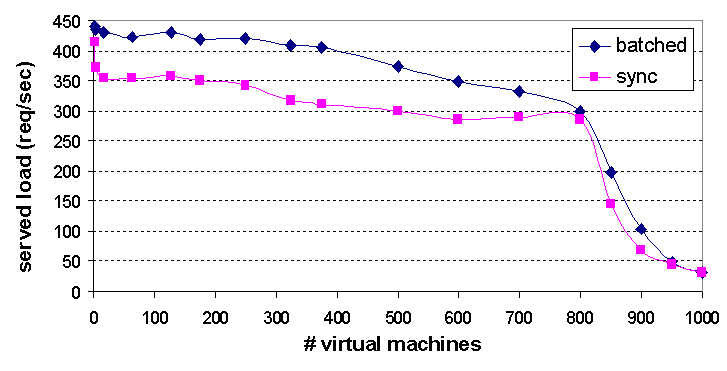
 [Next]
[Up]
[Previous]
[Next]
[Up]
[Previous]
Denali utilizes a batched, asynchronous model for virtual interrupt delivery. In Figure 4, we quantify the performance gain of Denali's batched, asynchronous interrupt model, relative to the performance of synchronous interrupts. To gather the synchronous interrupt data, we modified Denali's scheduler to immediately context switch into a VM when an interrupt arrives for it. We then measured the aggregate performance of our web server application serving a 100KB document, as a function of the number of simultaneously running VMs. For a small number of VMs, there was no apparent benefit, but up to a 30% gain was achieved with batched interrupts for up to 800 VMs. Most of this gain is attributable to a reduction in context switching frequency (and therefore overhead). For a very large number of VMs (over 800), performance was dominated by the costs of the isolation kernel paging VMs in and out of core.

Figure 4: Benefits of batched, asynchronous interrupts: Denali's interrupt model leads to a 30% performance improvement in the web server when compared to synchronous interrupts, but at large scale (over 800 VMs), paging costs dominate.